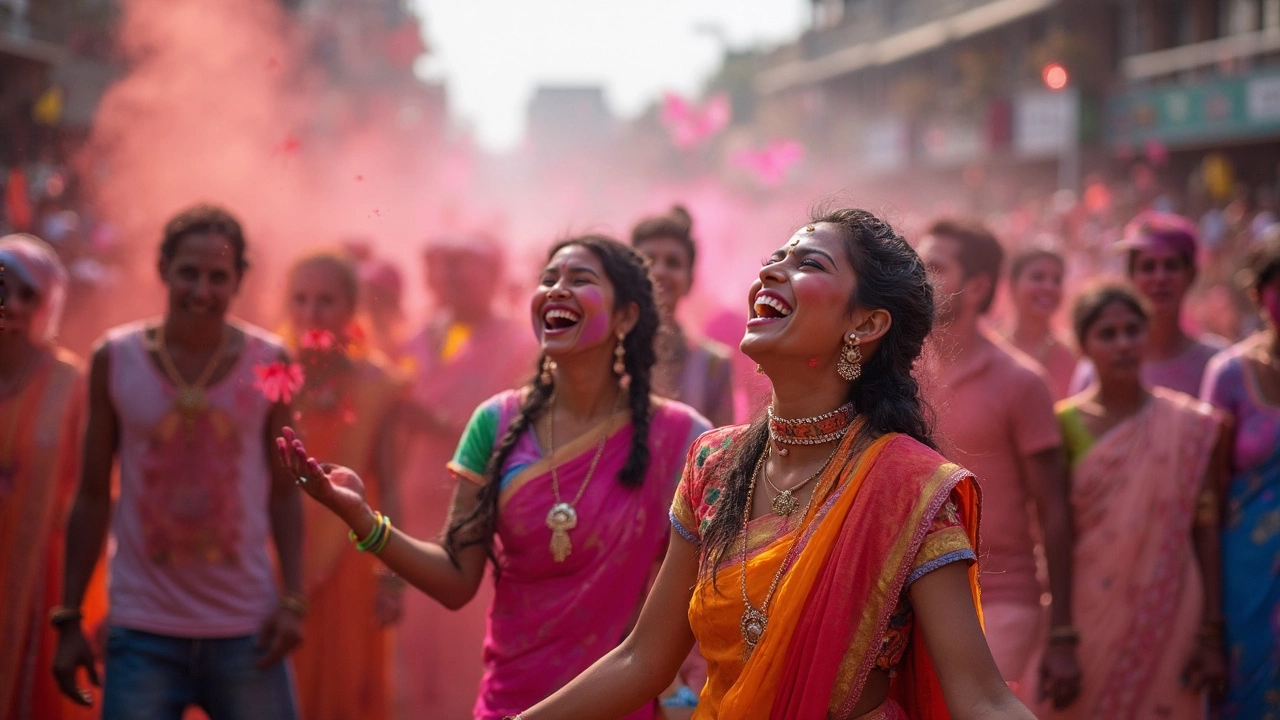Hindu Festivals: Celebrations, Traditions, and What to Expect in India
When you think of Hindu festivals, large-scale religious celebrations rooted in ancient traditions, often tied to seasons, deities, and mythological events. Also known as Indian religious festivals, they are more than rituals—they’re living, breathing expressions of faith that shape how India moves, eats, and travels. These aren’t quiet temple services. They’re full-blown cultural explosions: rivers turning into prayer lanes, streets becoming stages for drumming and dancing, and entire towns shutting down for days. If you’ve ever seen a photo of the Kumbh Mela—where over 100 million people gather at once—you’ve seen the scale of what Hindu festivals can be.
These festivals aren’t just about prayer. They’re tied to geography, history, and daily life. The Kumbh Mela, the world’s largest religious gathering, held every 12 years at four sacred river confluences turns barren riverbanks into temporary cities with hospitals, police stations, and food stalls serving millions. Then there’s Durga Puja, a 10-day festival in West Bengal where giant clay idols of the goddess Durga are worshipped, then immersed in rivers, turning neighborhoods into art galleries and community centers. And Rath Yatra, the chariot festival in Puri where thousands pull massive wooden carts carrying deities through streets—it’s not just a parade, it’s a physical act of devotion that pulls entire cities into motion.
These events aren’t just for locals. Millions of tourists come to India specifically to witness them. You’ll find travelers from Europe, the U.S., and Southeast Asia lining the streets of Varanasi during Shivaratri, or joining the crowds in Jaipur during Holi. But knowing when to go, where to stand, and what to expect makes all the difference. These festivals don’t follow hotel calendars—they follow lunar cycles, temple traditions, and ancient texts. That’s why planning ahead isn’t optional. You need to know if you’re heading to a riverbank in Uttar Pradesh or a temple courtyard in Tamil Nadu, because each one has its own rhythm, rules, and energy.
And it’s not just about the big names. Behind every major festival are dozens of local versions—smaller, quieter, but just as meaningful. A village in Odisha might celebrate Jagannath’s return with a single drum and a handful of offerings. A family in Gujarat might light diyas for Diwali with homemade sweets and no crowds. These are the moments that stick with you—not the Instagram shots, but the quiet smiles, the shared meals, the way strangers become temporary family.
What you’ll find below are real stories from people who’ve been there: how to eat safely during a festival, which days to avoid if you hate crowds, how to dress without offending, and where to find the most authentic experiences without paying tourist prices. Whether you’re drawn to the roar of a thousand drums or the stillness of a candlelit shrine, these posts will help you navigate Hindu festivals—not as a spectator, but as someone who understands what’s really happening.
Holi Festival: Experience India's Wildest Temple Celebration
Holi is one of the most spectacular Hindu festivals, famous for its wild bursts of color and joyful chaos. This article walks you through what happens during Holi, its religious roots, and why it's a must-see if you're planning temple tours in India. Find out the best places to join the festivities, what to expect, and how to make the most out of your visit. Expect some handy travel tips, a few surprising facts, and advice on staying safe while making unforgettable memories. Get ready for a crash course in the real Holi experience, beyond what Instagram shows.
Read more